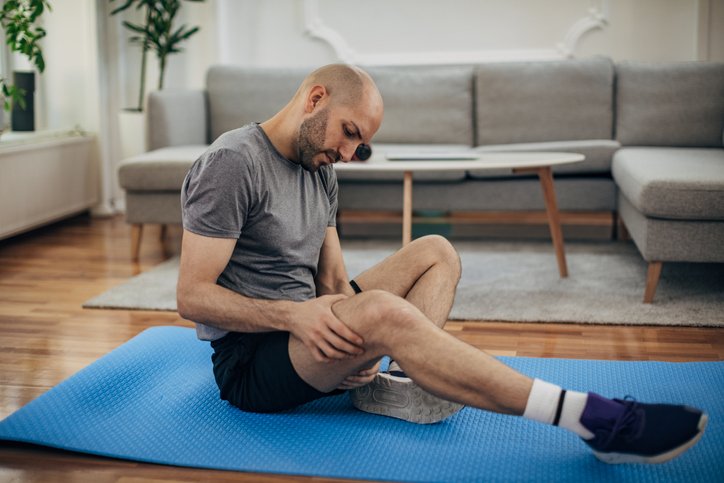Hair Loss on Legs: Watch Out for Peripheral Artery Disease

Hair Loss on Legs: Watch Out for Peripheral Artery Disease
Notice your leg hair thinning or disappearing? Before you chalk it up to aging or genetics, it’s worth paying attention. Hair loss on your legs can sometimes be a subtle yet important sign of peripheral artery disease (PAD). At Arizona Vein and Laser Institute, we’ve spent years helping patients connect the dots between small changes in their legs and bigger circulation issues. I share this because catching PAD early can make a huge difference.
What Is Peripheral Artery Disease?
Peripheral artery disease happens when the arteries that supply blood to your limbs narrow or become blocked. When your legs aren’t getting enough oxygen-rich blood, it shows in ways you might not immediately think of, like thinning hair or changes in skin texture.
PAD isn’t just a cosmetic concern. Left untreated, it can lead to pain, numbness, and even serious complications. Knowing the early warning signs gives you a chance to act before things get more severe.
Peripheral Artery Disease Symptoms to Watch For
Hair loss alone doesn’t always mean PAD, but paired with other peripheral artery disease symptoms, it becomes a red flag. Look out for:
- Pain or cramping in your legs when walking (claudication)
- Cold lower legs or feet
- Pale, bluish, or shiny skin
- Weak or absent pulses in your legs or feet
- Slow-healing sores or wounds
Why Hair Loss Happens
You might be wondering why PAD affects hair growth at all. Hair follicles, like any part of your body, need nutrients and oxygen to thrive. When blood flow is reduced, follicles don’t get what they need, and hair thins or disappears. You may also notice changes in skin color or texture in the same areas.
Not everyone with PAD will lose leg hair, but if you see this alongside other warning signs, it’s something to take seriously.
Diagnosing Peripheral Arterial Disease
When we suspect PAD, we’ll take some observations and run a couple of tests:
- Physical exam of the legs and feet
- Checking pulses in your legs
- Vascular ultrasound to measure blood flow and detect blockages
- Ankle-brachial index (ABI) test to compare blood pressure in your arms and legs
Medical Treatment for Peripheral Arterial Disease
Treatment depends on how advanced PAD is. The goal is improving circulation, easing symptoms, and preventing serious issues. Common approaches include:
- Lifestyle Adjustments – Regular exercise, quitting smoking, and managing blood sugar and cholesterol
- Medications – To reduce blood clot risk or improve circulation
- Vascular Procedures – Including vascular surgery or minimally invasive interventions to restore blood flow
What If PAD Goes Unchecked?
If peripheral artery disease (PAD) goes unchecked, the consequences can get serious because reduced blood flow affects your legs and sometimes other organs, too. PAD is more than “just leg pain or hair loss.” It’s a sign your circulation needs attention. Here’s a breakdown of what can happen if it isn’t addressed:
- Worsening Pain and Mobility Issues – Early on, PAD often causes leg cramps or pain when walking (called claudication). If untreated, the pain can become more frequent and severe, sometimes even happening at rest. This can make walking, exercising, or daily activities difficult, limiting your mobility and quality of life.
- Non-Healing Sores or Ulcers – Poor circulation slows healing. Minor cuts, scrapes, or blisters on your legs or feet may take a long time, or fail entirely, to heal. These wounds increase the risk of infection and can become chronic ulcers.
- Infections and Gangrene – Severe PAD can lead to tissue death (gangrene) if blood flow is critically reduced. This is especially risky in the feet or toes. Untreated infections combined with gangrene may require surgical intervention or even amputation in extreme cases.
- Heart Attack or Stroke – PAD is often linked to atherosclerosis (plaque buildup in arteries), which can affect your heart and brain, too. People with PAD have a higher risk of heart attack or stroke, even if leg symptoms seem mild.
- Reduced Independence and Quality of Life – Beyond physical risks, untreated PAD can drastically impact daily life by limiting activity, causing chronic pain, and creating anxiety about your health.
When to Take Action
Hair loss on your legs may seem minor, but in the context of peripheral artery disease, it’s a signal not to ignore. The combination of hair changes, pain, or other circulation issues is your body’s way of saying, “Check this out!” At Arizona Vein and Laser Institute, we’ve seen firsthand how early evaluation and treatment can make a significant difference in circulation and vascular health. If you notice these signs in Arizona, don’t wait. Contact us for a consultation as soon as you can!
*Last Updated on 10/16/2025
